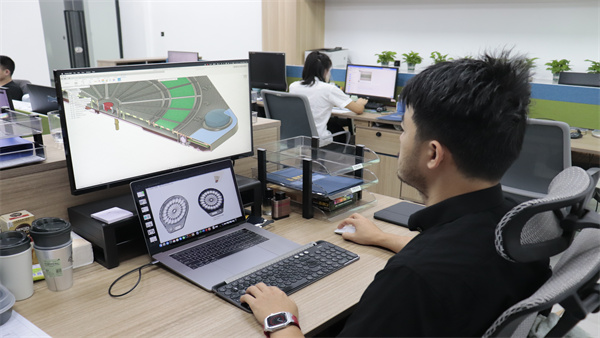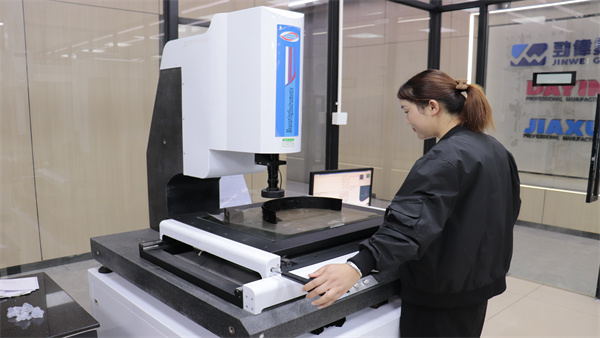In injection molding, mold design is a crucial step, demanding both complexity and precision, with a special focus on ensuring product structural strength and stability.
Firstly, analyzing material properties is essential in mold design. Different plastic materials exhibit varying flow characteristics, shrinkage rates, strength, and toughness during injection molding, directly impacting the final product’s structural integrity and stability. Before designing the mold, designers should thoroughly understand the physical and mechanical properties of the selected material and consult with suppliers as needed to inform a suitable design. For example, for products requiring high strength, high-strength, low-shrinkage plastics can be chosen to ensure stability during production and use. Additionally, designers must consider the material’s flow properties during the injection process to avoid product defects caused by uneven material flow.

Secondly, the geometric shape and structural design of the product significantly influence its strength and stability. Designers should adhere to fundamental principles to ensure structural robustness. For instance, sharp edges and abrupt angles should be avoided to reduce stress concentrations, thereby enhancing product strength. Appropriate wall thickness is also critical for stability. Ideally, the wall thickness should be uniform, avoiding excessively thick or thin areas—thin walls may lack strength, while overly thick walls can result in uneven cooling and longer molding times. Tools like finite element analysis (FEA) can be used to simulate product behavior under various wall thickness conditions, allowing designers to assess and optimize strength and stability.
In mold design, effective support structures are key to ensuring strength and stability. The mold’s support structure should distribute stress evenly during injection, preventing deformation or cracking due to stress concentration. Designers can enhance mold support by adding support points or using reinforcing ribs. Additionally, the cooling system’s design greatly impacts strength and stability; a well-designed cooling system promotes uniform temperature distribution, reducing shrinkage variations and preventing deformation during cooling.
The overall mold design should also consider production stability. Factors like the injection machine’s operating condition, injection pressure, and temperature impact mold stability. Mold structure should be robust enough to withstand high pressure and temperature during injection. The guidance system should also be carefully designed to ensure smooth opening and closing, preventing structural damage due to mechanical misalignment.
Lastly, designers must account for the product’s operating environment and load requirements. During use, the product may experience forces from various directions, and external factors can affect structural strength. For products expected to withstand heavy loads, increasing material strength or optimizing structural design can improve load-bearing capacity. Simulation analysis can help predict product behavior under real-world conditions, ensuring adequate strength and stability during use.
By integrating these considerations into injection mold design, designers can significantly enhance the structural strength and stability of molded products, ensuring they meet performance requirements and withstand practical applications.

In injection mold design, team collaboration is also essential for ensuring product structural strength and stability. Effective communication among designers, engineers, and technicians allows for early identification of potential issues and timely adjustments. For example, engineers can offer production process insights during design, and technicians can provide material performance analysis, helping designers consider strength and stability comprehensively. By learning from past projects, the team can draw on successful cases, avoid repeated mistakes, and improve design efficiency.
Once the mold design is complete, thorough validation and testing are necessary to ensure structural strength and stability. Through sample testing, designers can gather data on product performance in actual production and usage scenarios, allowing further evaluation of its strength and stability. Any issues can be quickly addressed, and designs optimized to guarantee final product quality. With advancing technology, digital simulation techniques are increasingly used in mold design. Finite element analysis (FEA) and flow analysis enable designers to assess structural strength and stability during the design phase, reducing the risk of issues arising later.
In conclusion, considering product structural strength and stability in injection mold design is a systematic task that involves material characteristics, geometry, support structures, production processes, and team collaboration. Designers can significantly enhance strength and stability through sound design principles, analytical tools, and comprehensive testing, ensuring reliable and durable injection molded products. With ongoing technological progress and evolving design concepts, injection mold design will continue to advance toward precision, efficiency, and sustainability, providing robust support for plastic product manufacturing.
If you have higher requirements for structural strength and stability in injection mold design, DAYIN Plastics Products Co., Ltd. is your ideal choice. With a professional design team, extensive experience, and advanced technology, we provide customized injection mold design solutions to ensure exceptional product quality. Contact us today and let DAYIN support your injection molding success!
